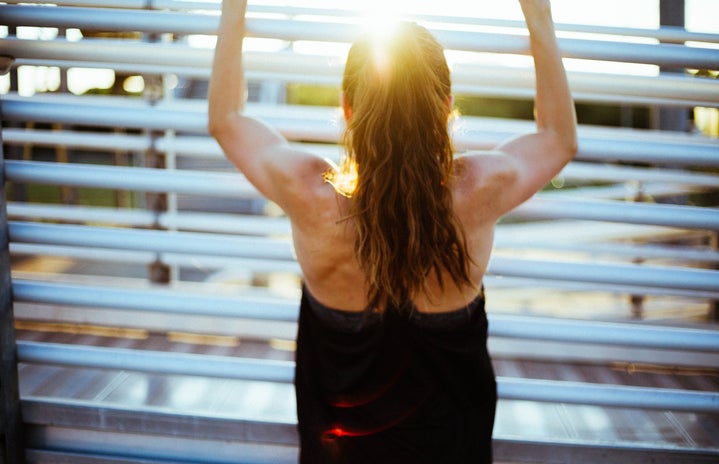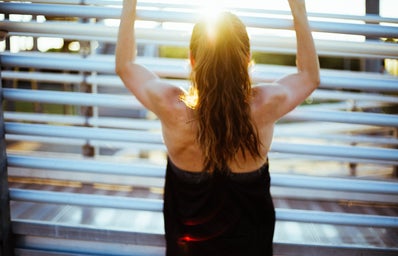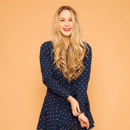Last Sunday, October 18, members of the Her Campus team took part in a breast cancer walk in Westport. Many people there were survivors and family members of those who have been affected, myself included. I walk for both my grandmothers and my great aunt who have all survived breast cancer, but I also walk for myself. Not because I have cancer, but because I think it is important that we walk now because someday we may ourselves, or someone we know and love be diagnosed with breast cancer.
We all know what breast cancer is, and some of us may even know someone who has suffered from the disease. With one in every eight women affected by breast cancer in their lifetime, early detection is key in saving thousands of women’s lives every year.
At our age, you may think you’re too young to contract breast cancer. That may be the case, but learning the facts and getting to know your body in your early twenties may save you down the road.
Most know that breast cancer is a cancer that forms in the tissue of the breast. You may not know, though, that there are two broad types: invasive and noninvasive. When someone is diagnosed with breast cancer doctors classify based on where the disease started (milk ducts, lobules, etc.) and how the disease is growing.
Noninvasive: Cancerous cells have formed solely in one part of the breast tissue and haven’t spread to the surrounding tissue, lobules, or ducts.Invasive: The cancerous cells have moved beyond the breast tissue and spread to other parts of the body through the bloodstream and lymph nodes.
Though most women are diagnosed with breast cancer after the age of 45, cases of breast cancer in young women are on the rise. It is estimated that there are 250,000 women diagnosed with breast cancer at age 40 or younger living in the U.S. today. It is also estimated that more than 13,000 young women will be diagnosed this year. Breast cancer in young women is harder to diagnose because the breast tissue is denser than in those of older women, and cancer found at a young age tends to be aggressive and less likely to respond to treatment. So you might ask, am I at risk? While breast cancer can be genetic, there are lifestyle choices that put you at a higher risk:
· Gender: breast cancer appears in both men and women, but women are by far more likely to get the disease
· Age: only 15% of breast cancers occur in women younger than 45
· Obesity: before menopause women’s ovaries produce estrogen but after menopause estrogen comes mostly from fat tissue. Having an excess about of this fat tissue creates a hormonal imbalance
· High breast density: women with dense breast tissue have less fatty tissue in their breasts and more glandular and fibrosis tissue. Women with denser breast tissue are 1.2 to 2 times more likely to have breast cancer
· Heavy drinking: Having one glass of alcohol a day does not increase your risk dramatically, but have 2 to 5 drinks a day does.
· Hormone treatment: While taking the oral contraceptive, your risk of cancer is higher. But, studies show that after the pill is stopped, the risk returns to normal.
The most common form of screening for breast cancer is a mammogram. It is suggested, though, that you do not start this screening until age 40. We know breast cancer can happen before age 40, so what can you do to check in the mean time? Well, at age 20 you can get a Clinical Breast Exam by your primary care or gynecologist. This should happen once every 3 years until your first mammogram. You also should start Breast Self-Examinations (Here you can watch a how-to video). This is a method in which once a month you check your breasts for any change in composition.
The classic example of what to look for in a BSE is a lump. What many people don’t know is that most women’s breasts are lumpy. Breast tissue is composed of a bumpy texture that varies from one woman’s breast to another’s. This is why it is suggested to get to know the texture and pattern of your breast tissue. When feeling your breast you are looking for lumps that feel harder or different than the other ones in the tissue. The best time to do the BSE is a week after your period. This is suggested because in the weeks leading up to your period your breasts tend to become more swollen, tender, and lumpier.
What happens if you find a lump, though? It is always suggested that you go have your breast examined by a doctor, but take a deep breath first. A lump doesn’t automatically mean cancer; often cysts and fibroadenomas also can cause lumps within the breast tissue. Cancerous lumps will not change size or texture throughout your menstruation cycle. Most women in their lifetime will experience something like this, and it is scary. You don’t expect to hear the C word in relation to you in your twenties. Consult your primary care, make an appointment with a gynecologist, and know what to look for.
Symptoms to look for in your BSE:
· Skin changes (swelling, redness, physical appearance) in the breast
· A change in size/shape of the nipple
· Nipple discharge (other than breast milk)
· Pain in/surrounding the breast
· Lumps felt inside and on the breast
· Irritated or itchy breast
· Change in color of the breast
· Increase in size/shape (in short period of time)
· Peeling/flaking skin around the nipple


